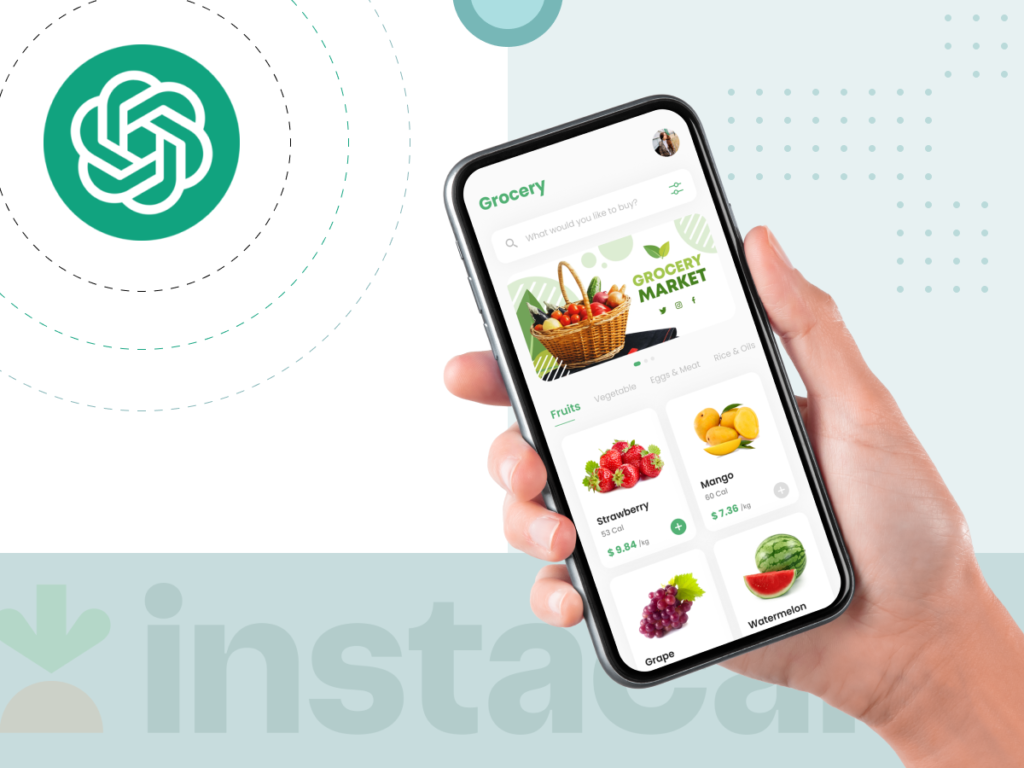In the fast-evolving world of online grocery delivery, standing out from the competition is crucial. As the popularity of grocery delivery apps like Instacart continues to soar, many entrepreneurs and developers are creating Instacart clone apps to tap into this growing market. However, with the influx of similar apps, differentiating your Instacart clone is essential for capturing market share and building a loyal customer base. This article explores key strategies and features to make your Instacart clone app stand out in a competitive landscape.
1. Understand Your Target Market
Before diving into development, it’s crucial to understand the needs and preferences of your target market. Conduct thorough market research to identify your potential users’ demographics, shopping habits, and pain points. Surveys, focus groups, and competitor analysis can provide valuable insights into what consumers are looking for in a grocery delivery app. Partnering with an experienced Instacart Clone App Development Company can also help custom your app to meet these needs effectively.
Key Points:
- Analyze customer preferences and behaviors.
- Identify gaps in the market that your app can address.
- Study competitors to understand their strengths and weaknesses.
2. Offer a Unique Value Proposition
Your Instacart clone app needs a unique value proposition (UVP) that sets it apart from existing solutions. This could be a combination of unique features, services, or business models that cater to specific customer needs or pain points.
Possible UVPs:
- Exclusive Partnerships: Collaborate with local grocery stores or brands to offer exclusive products or discounts.
- Personalized Recommendations: Use AI to analyze shopping history and preferences to provide tailored product suggestions.
- Eco-Friendly Options: Incorporate sustainability by offering eco-friendly packaging or partnering with organic and local farms.
3. Implement Advanced Technology
Leveraging cutting-edge technology can significantly enhance your app’s functionality and user experience. Integrating advanced features will not only streamline operations but also make your app more appealing to tech-savvy users.
Technological Enhancements:
- AI and Machine Learning: Implement AI to personalize user experiences, optimize delivery routes, and predict shopping trends.
- Augmented Reality (AR): Use AR to help users visualize products or provide interactive shopping experiences.
- Voice Assistance: Incorporate voice command features for easier navigation and hands-free shopping.
4. Focus on User Experience (UX) Design
A seamless and intuitive user experience is vital for any successful app. Invest in a user-friendly interface that simplifies the shopping process, from browsing products to checkout.
UX Design Tips:
- Simplify Navigation: Ensure that users can easily find and purchase products with minimal clicks.
- Optimize for Mobile: Since most users will access your app via smartphones, ensure that the design is mobile-responsive.
- Provide Clear Instructions: Offer clear instructions and feedback throughout the shopping and checkout process.
5. Enhance Customer Support
Exceptional customer support can be a significant differentiator in the competitive market of grocery delivery apps. Provide multiple channels for customer support and ensure that your team is well-trained to handle queries and issues promptly.
Customer Support Features:
- 24/7 Support: Offer round-the-clock support via chat, email, or phone.
- In-App Chat: Integrate a chat feature for real-time assistance and issue resolution.
- Help Center: Create a comprehensive help center with FAQs, guides, and troubleshooting tips.
6. Optimize Delivery Logistics
Efficient delivery logistics are crucial for ensuring customer satisfaction. Streamline your delivery operations to provide timely and accurate deliveries.
Logistics Optimization:
- Real-Time Tracking: Allow users to track their orders in real time and receive updates on delivery status.
- Flexible Delivery Slots: Offer flexible delivery time slots to accommodate users’ schedules.
- Delivery Management System: Implement a robust delivery management system to optimize routes and reduce delivery times.
7. Implement Loyalty Programs and Incentives
Rewarding loyal customers and incentivizing new users can drive engagement and retention. Develop a loyalty program that encourages repeat purchases and referrals.
Loyalty and Incentives:
- Points System: Create a points system where users earn points for every purchase that can be redeemed for discounts or rewards.
- Referral Bonuses: Offer bonuses or discounts to users who refer friends and family to your app.
- Seasonal Promotions: Run seasonal promotions and limited-time offers to attract new users and boost sales.
8. Ensure Data Security and Privacy
In an era where data breaches are common, ensuring the security and privacy of user data is paramount. Implement strong security measures to protect sensitive information and build trust with your users.
Data Security Measures:
- Encryption: Use encryption to protect user data during transactions and storage.
- Secure Payment Gateways: Integrate secure payment gateways to handle financial transactions safely.
- Privacy Policies: Clearly communicate your privacy policies and how user data is handled.
9. Leverage Data Analytics
Utilize data analytics to gain insights into user behavior, app performance, and market trends. Analyzing data can help you make informed decisions and continuously improve your app.
Analytics Insights:
- User Behavior Analysis: Track user behavior to understand how they interact with your app and identify areas for improvement.
- Performance Metrics: Monitor key performance metrics such as conversion rates, retention rates, and average order value.
- Market Trends: Stay updated on market trends to adapt your app’s features and offerings accordingly.
10. Engage in Effective Marketing
A strong marketing strategy is essential for attracting users to your app. Utilize various marketing channels to reach your target audience and promote your unique value proposition.
Marketing Strategies:
- Social Media: Use social media platforms to create awareness, engage with users, and run targeted ads.
- Content Marketing: Publish content related to grocery shopping, recipes, and healthy living to attract and retain users.
- Influencer Partnerships: Collaborate with influencers to promote your app and reach a wider audience.
Conclusion
Differentiating your Instacart clone app in a competitive market requires a combination of understanding your target audience, offering unique features, leveraging advanced technology, and maintaining exceptional user experience. By implementing these strategies, you can create an app that stands out, attracts users, and fosters long-term loyalty. As the grocery delivery market continues to grow, staying innovative and responsive to user needs will be key to your app’s success.




